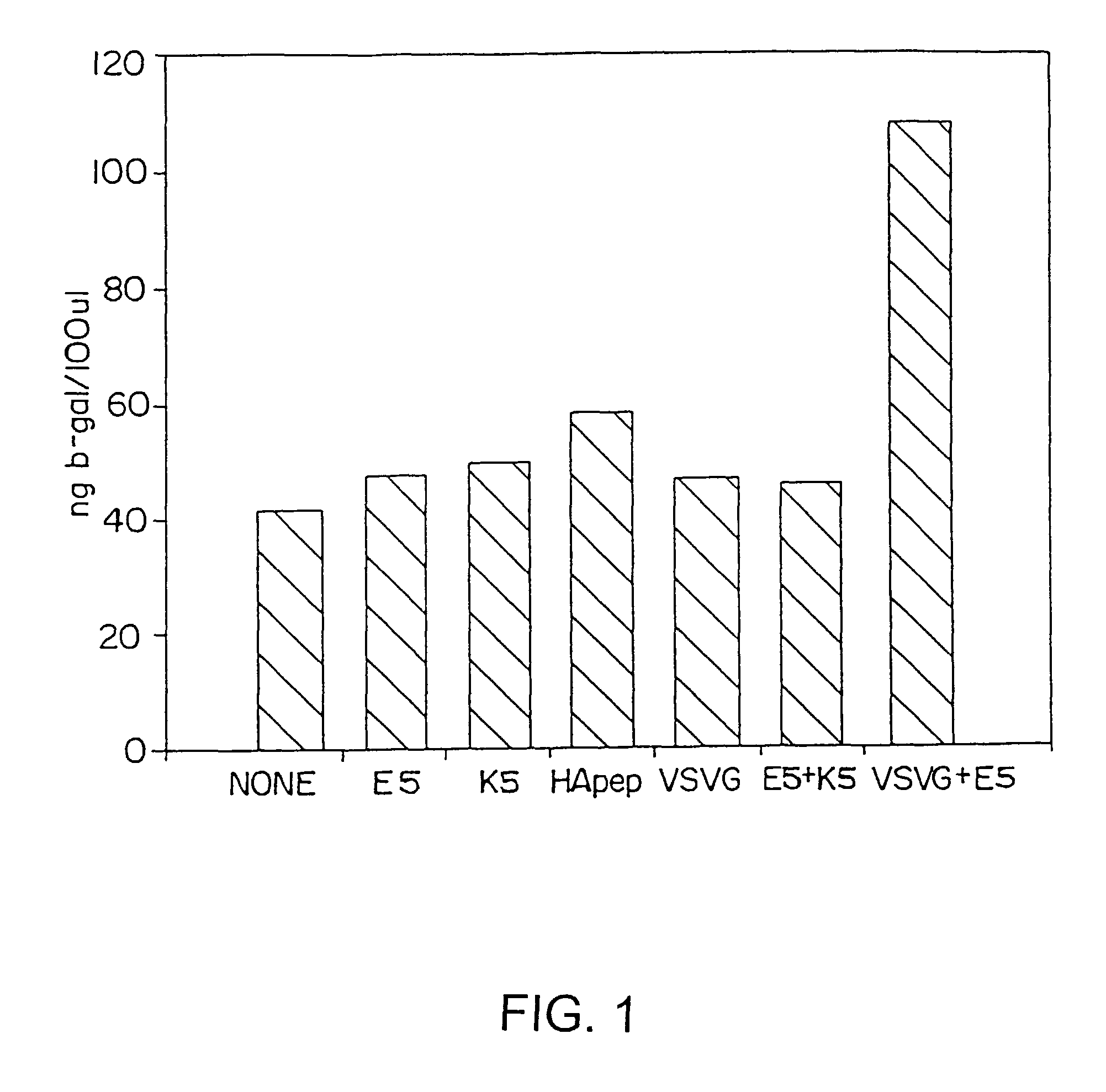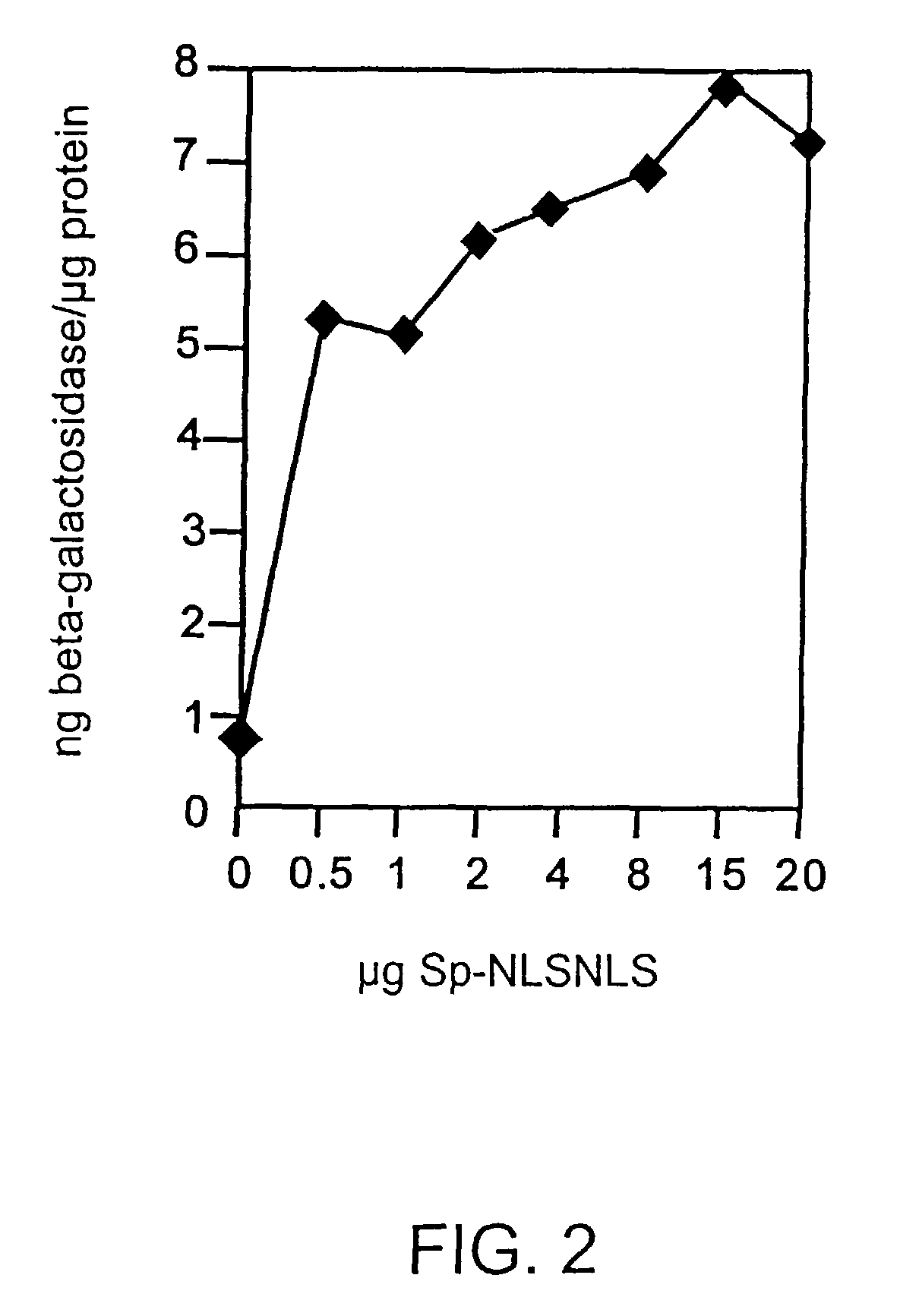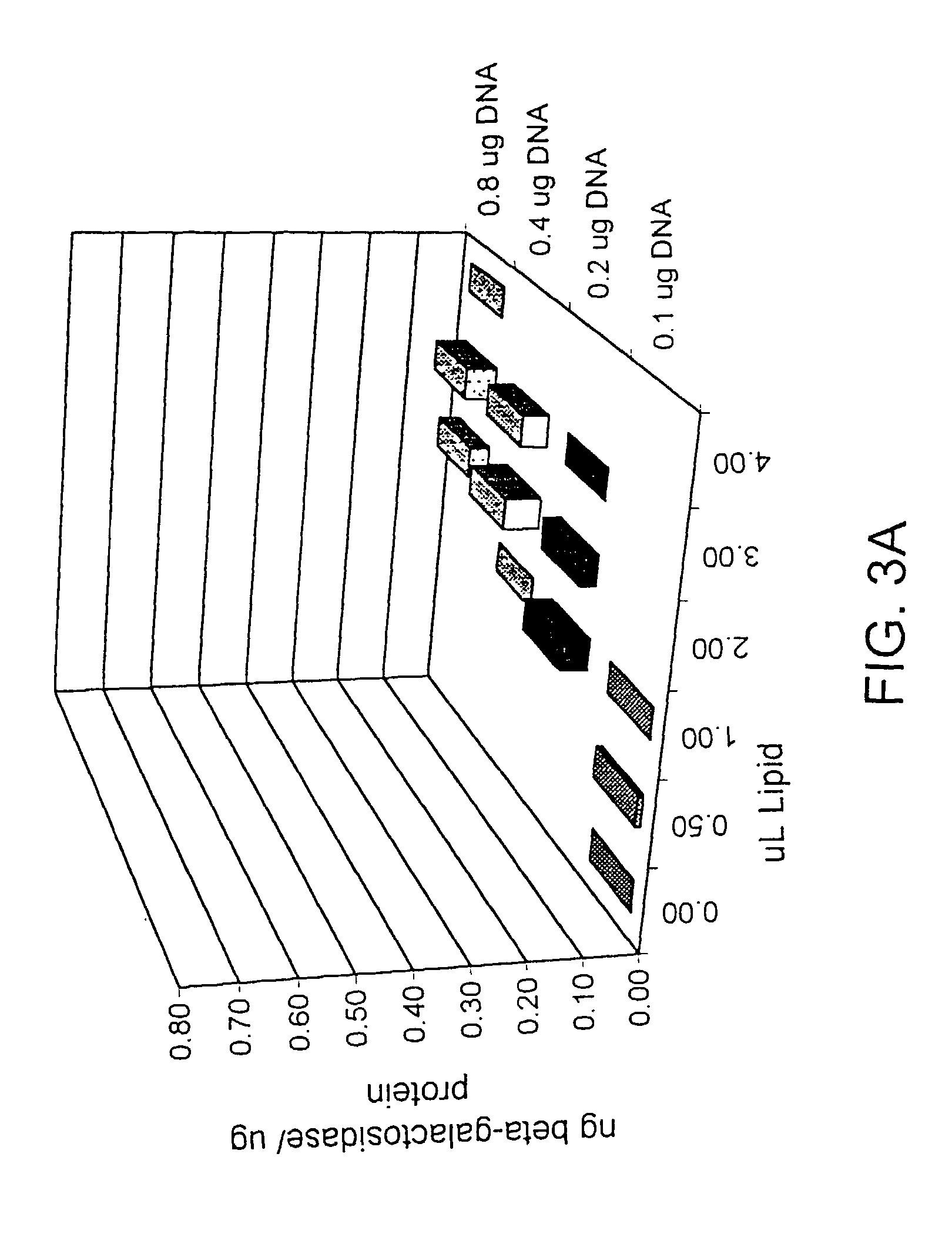Peptide-enhanced transfections
a technology of peptides and transfection agents, applied in the field of peptide-enhanced transfections, can solve the problems of high molecular weight anionic molecules, not universally effective for transfection of all cell types, and high dosages of nucleic acids, so as to improve the efficiency of transfection, enhance the efficiency of eukaryotic cell transfection, and enhance the effect of complex formation
- Summary
- Abstract
- Description
- Claims
- Application Information
AI Technical Summary
Benefits of technology
Problems solved by technology
Method used
Image
Examples
example 1
Peptides and Peptide Conjugates
[0116]Peptides were synthesized using automated solid phase peptide synthesis as described, e.g., in Stewart et al. (1984) Solid Phase Peptide Synthesis, Pierce Chemical Company, Rockford, Ill. Peptides were synthesized using a polyamide-Kieselguhr composite resin and a Milligen 9050 peptide synthesizer (Milligen / Biosearch, Burlington, Mass.). Coupling cycles were performed according to the manufacturer's recommendations. 9-Fluorenyl-methyloxy-carbonyl (Fmoc) amino acid was activated as a pentafluorophenyl ester (-OPfp ester); Peptides were deblocked using; (1) 20% piperidine in N,N-dimethylformamide (DMF) for alpha-amino groups; Peptides were cleaved from the resin and deprotected using 95% trifluoroacetic acid (TFA), (2) Reagent R [TFA (90%), thioanisol (5%), ethylene dithiole (3%) and anisole (2%)], Reagent B [TFA (88%), phenol (5%), triisopropylsilane (2%) and water (5%)] or Reagent T [TFA (95%), triisopropylsilane (5%); Deprotection agent being ch...
example 2
Enhancement of Cationic Lipid Transfection of Human Fibroblast Cells with Viral Peptides Added into Transfection Medium
[0126]The following viral peptides were synthesized using automated solid phase peptide synthesis as described in Example 1: the membrane fusion region of influenza virus (HApep)(see, Epand et al. (1992) Biopolymers 32:309); modifications of FluHa to yield hemagglutinin peptides E5 and K5 (see, Kamata, H. et al. (1994) Nucleic Acids Res. 22:536-537); and vesicular stomatitis virus G-protein, VSVG (see, Schlegel, R. and Wade, M. (1985) J. Virol. 53:319). The nuclear localization signal (NLS) of SV40 large T antigen, NLS (see, Lanford et al. (1986) Cell 46:575) and the RGD peptide (Ruoslahti, E. and Pierschbacher, D. (1987) Science 238:491) were also synthesized. The sequences of the peptides synthesized is given in Table 5.
[0127]Newborn human fibroblasts (NHF) were isolated from neonatal foreskin dermis and prepared as described in, Hawley-Nelson, P., et al. (1993) F...
example 3
Transfection Enhancement of Sp-NLSNLS Pre-Complexed to DNA in Combination with “LIPOFECTAMINE”
[0132]Sp-NLSNLS (the peptide (NLSNLS): GYGPKKKRKVGGGGYGPKKKRKVGG [SEQ ID NO:13] conjugated to spermine) enhances transfection efficiency in combination with “LIPOFECTAMINE” in human fibroblasts, NIH 3T3, MDCK and BHK-21 cells when the peptide is pre-complexed to the DNA prior to addition of “LIPOFECTAMINE.”
[0133]In this example, all media, sera, and reagents were from GIBCO BRL unless otherwise noted. All cells were cultured in Dulbecco's MEM (DMEM, high glucose: 4,500 mg / L D-glucose, with L-glutamine and phenol red) with 0.1 mM Non-Essential Amino Acids (NEAA), 100 U / mL penicillin and 100 μg / mL streptomycin. Human fibroblasts, MDCK, and BHK-21 cells were cultured with 10% Fetal Bovine Serum (FBS). NIH 3T3 cells were cultured with 10% Calf Serum. Human fibroblast cells were obtained as described in Example 2. NIH 3T3 (NIH Swiss mouse embryo, contact-inhibited fibroblasts), MDCK (dog kidney ...
PUM
| Property | Measurement | Unit |
|---|---|---|
| temperature | aaaaa | aaaaa |
| pH | aaaaa | aaaaa |
| concentration | aaaaa | aaaaa |
Abstract
Description
Claims
Application Information
 Login to View More
Login to View More - R&D
- Intellectual Property
- Life Sciences
- Materials
- Tech Scout
- Unparalleled Data Quality
- Higher Quality Content
- 60% Fewer Hallucinations
Browse by: Latest US Patents, China's latest patents, Technical Efficacy Thesaurus, Application Domain, Technology Topic, Popular Technical Reports.
© 2025 PatSnap. All rights reserved.Legal|Privacy policy|Modern Slavery Act Transparency Statement|Sitemap|About US| Contact US: help@patsnap.com



